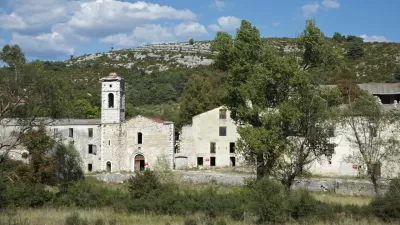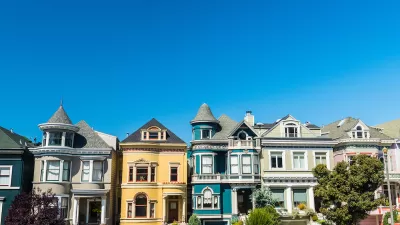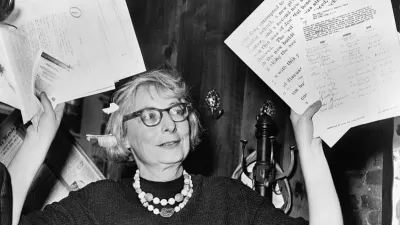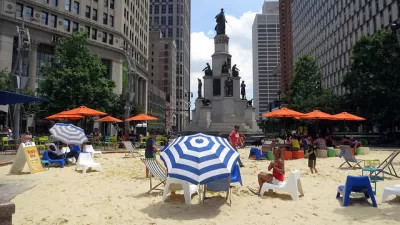In an illustrated essay, Chuck Wolfe contrasts the ideal form of the New England town with an abandoned French village, calling out the human infrastructure essential to successful urban places.

Writing in myurbanist, Wolfe takes on the strength and fragility of urban places, and the inherent ironies of surviving town forms.
Under the guise of "remember your past", Wolfe notes the basic elements of the classic New England town as a convenient model for today’s quest for compact, walkable urban areas. Then, using the gloss of a personal encounter with a small, French urban settlement--once called Brovès--he asks what happens when the human underpinnings for a town are taken away.
Brovès is one of several villages and hamlets in the Var region of Provence abandoned in the 1970′s in favor of a military camp, and is no longer recognized as a municipality.
Wolfe describes how its physical form lives on with decisive irony:
The former village of Brovès is a stage at first deceptively alive with structure–like the New England town, a church and surrounding buildings dot the landscape. But it is a remarkably silent landscape, a silence with military “interdit” (in English, “no entry”) signs that begged for research...
He continues:
There is a larger French sociopolitical picture, of course that speaks to military defense decisions of the Cold War era. But at core, my sudden encounter with Brovès contrasts markedly with urbanism that can be reclaimed in the New England landscape addressed above.
In conclusion, Wolfe explains two critical lessons for looking forward.
First, an interdisciplinary view of today’s urbanism critical: multiple, intertwining forces define how places evolve. Second, Shakespeare's Coriolinus is commonly cited for a reason. The people truly are the city.
FULL STORY: contrasting two models of how places survive

Alabama: Trump Terminates Settlements for Black Communities Harmed By Raw Sewage
Trump deemed the landmark civil rights agreement “illegal DEI and environmental justice policy.”

Planetizen Federal Action Tracker
A weekly monitor of how Trump’s orders and actions are impacting planners and planning in America.

The 120 Year Old Tiny Home Villages That Sheltered San Francisco’s Earthquake Refugees
More than a century ago, San Francisco mobilized to house thousands of residents displaced by the 1906 earthquake. Could their strategy offer a model for the present?

Record Temperatures Prompt Push for Environmental Justice Bills
Nevada legislators are proposing laws that would mandate heat mitigation measures to protect residents from the impacts of extreme heat.

Downtown Pittsburgh Set to Gain 1,300 New Housing Units
Pittsburgh’s office buildings, many of which date back to the early 20th century, are prime candidates for conversion to housing.

Trump Administration Could Effectively End Housing Voucher Program
Federal officials are eyeing major cuts to the Section 8 program that helps millions of low-income households pay rent.
Urban Design for Planners 1: Software Tools
This six-course series explores essential urban design concepts using open source software and equips planners with the tools they need to participate fully in the urban design process.
Planning for Universal Design
Learn the tools for implementing Universal Design in planning regulations.
Clanton & Associates, Inc.
Jessamine County Fiscal Court
Institute for Housing and Urban Development Studies (IHS)
City of Grandview
Harvard GSD Executive Education
Toledo-Lucas County Plan Commissions
Salt Lake City
NYU Wagner Graduate School of Public Service





























